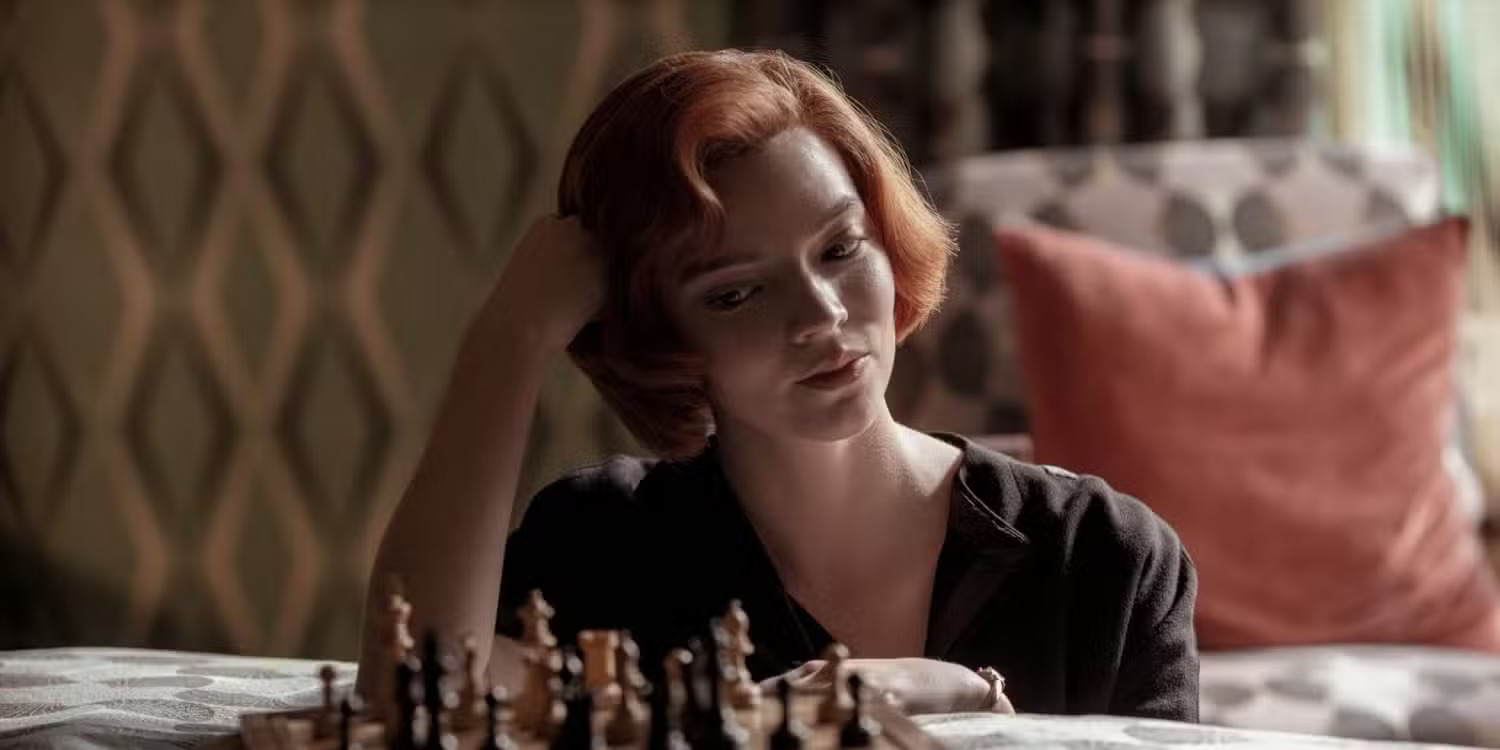The Queen’s Gambit follows Elizabeth “Beth” Harmon, a chess prodigy who rises to prominence in the male-dominated chess world of the Cold War era. From a young age, Beth struggles with deep-seated emotional trauma, the loss of her mother, and addiction to tranquilizer pills, which serve as both a coping mechanism and an obstacle. The series explores her journey to self-discovery and mastery of chess while highlighting the personal challenges that accompany her extraordinary talent. Beyond chess, the show is a character study of resilience, loneliness, and the pursuit of excellence in a world that constantly tests her.
The climax of the series centers on the 1968 Tournament of Champions in Moscow, where Beth faces some of the greatest chess players of her time, including Vasily Borgov, her ultimate rival. Leading up to this tournament, Beth’s career has been a series of highs and lows, marked by victories, setbacks, and moments of self-doubt. The events preceding her final match illustrate her dedication to the game, her strategic intelligence, and her growing emotional maturity. Each step along the way reveals both her exceptional skill and the personal obstacles she must overcome to achieve her goals.
Before facing Borgov, Beth confronts significant personal challenges. On the eve of the match, she succumbs to temptation and indulgence, jeopardizing her performance. A visit to Mr. Shaibel’s funeral, the man who first introduced her to chess at the orphanage, acts as a turning point. This moment, combined with support from her friend Jolene and the establishment of a disciplined routine, helps Beth overcome her drinking habits and refocus on her ambition to become a Grandmaster. Her preparation is as much mental and emotional as it is strategic, reflecting her growth as an individual.

Beth’s Final Match Blends Historical Inspiration, Strategic Brilliance, Personal Growth, and Emotional Triumph
Beth’s final match against Borgov draws inspiration from historical chess competitions. She chooses the Queen’s Gambit opening, a strategic move that sacrifices a pawn to gain control of the center of the board. This opening is unconventional for her, representing both personal boldness and innovative thinking. During the game, Borgov requests an adjournment, pausing play and sealing his next move. This break allows Beth to rethink her approach and prepare a counter-strategy. The adjournment symbolizes her capacity to reflect and gain clarity, ultimately helping her overcome obstacles that once hindered her performance.
In the subsequent session, Beth demonstrates extraordinary mental focus, free from sedatives or distractions. She visualizes a winning strategy in 19 moves, ultimately defeating Borgov and claiming the tournament victory. This triumph is both professional and deeply personal. It represents Beth’s ability to overcome addiction, self-doubt, and emotional turbulence, showcasing her growth as a chess player and as an individual. The victory confirms her place among the world’s best while highlighting the discipline, creativity, and resilience required to reach such heights.
The series draws on real-life chess history and expert guidance to craft authentic gameplay. Beth’s rivalry with Borgov parallels the famous 1972 match between Bobby Fischer and Boris Spassky, while the show incorporates insights from Grandmaster Bruce Pandolfini. Additionally, Beth’s character is loosely based on Garry Kasparov’s life, with advice from chess legends ensuring realism in high-level moves. The creators combined these inspirations with Walter Tevis’ 1983 novel to produce a believable yet dramatized depiction of the chess world, emphasizing both the sport’s intellectual rigor and its emotional impact.

Beth’s Victory Reflects Emotional Growth, Meaningful Connections, and Chess as Personal Fulfillment
After her victory, Beth walks through a Moscow park and observes older men playing chess. She is approached by a man resembling Mr. Shaibel, her mentor and surrogate father figure, and agrees to play a casual game. This encounter symbolizes her emotional maturation and willingness to engage with others outside the competitive chess environment. While she remains in Russia temporarily, the scene suggests she may eventually return to the United States to reconnect with friends and loved ones. The moment highlights Beth’s ability to form meaningful connections and enjoy chess for passion rather than obsession.
The Queen’s Gambit, the series’s namesake, is a strategic chess move that involves sacrificing a pawn to gain control of the board. This strategy mirrors Beth’s personal journey: she must make sacrifices, confront addiction, and trust the people who support her to achieve her ultimate goals. Her family, friends, and mentors all make sacrifices for her success, and Beth’s victory represents both a personal and relational triumph. Chess transitions from a coping mechanism into a source of joy and self-expression, illustrating her newfound freedom and contentment.
The Netflix adaptation closely mirrors Walter Tevis’ novel, maintaining the tension and optimism of Beth’s journey. Both the book and the show conclude with her final chess match and a reflective park scene, emphasizing her victory and emotional growth. By adhering to the source material, the series preserves the narrative’s integrity while expanding on Beth’s internal and external challenges. The faithful adaptation ensures that her journey feels complete, highlighting the balance between professional achievement and personal fulfillment.
The Queen’s Gambit received critical acclaim, earning multiple Emmys and Golden Globes for both the series and Anya Taylor-Joy’s performance. Critics praised the storytelling, character development, and authentic portrayal of competitive chess. The ending, in particular, offers a satisfying conclusion to Beth’s arc, illustrating her mastery of the game, emotional growth, and readiness to embrace life beyond the chessboard. By combining a gripping sports narrative with a deeply human story of resilience and recovery, the series delivers a cathartic and fulfilling experience for viewers.



